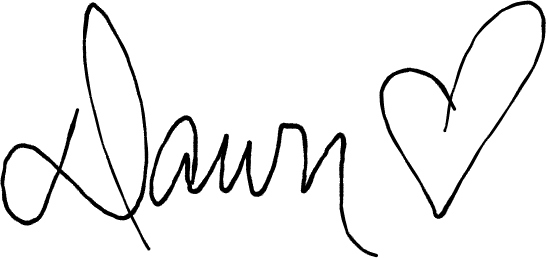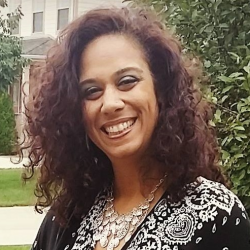When I woke up this morning to the realization that I had only two short weeks before I would return to school, my brain felt as if it suddenly caught fire. In actuality, I knew yesterday that today would mark two weeks until my “back to school” starting point; however, there’s something about putting a deadline in whole number form: Two weeks. Not two and a half, or 2.1 weeks, just two. Panic ensued. I still had so much to do.
My second cup of coffee in hand, I headed to my office and pulled my To-Do list out from beneath a stack of books, notebooks, and papers with every intention of adding to it.
I mulled it over: syllabi to complete–high school and college editions; lessons to plan; phone calls to make; emails to send; seminars to attend; workshops to develop. And this didn’t even include my everyday tasks and errands such as groceries, laundry, appointments, catching up with friends, dinner. The list was never-ending. After all, that’s precisely why we have To-Do lists in the first place: because there will alway be things we have to do. They will always exist, evolving as our roles and responsibilities evolve, never leaving us to wonder, “Whatever will I do with my time?”
Today, though, as I contemplated the future of my To-Do list and what I might add to it, another thought crossed my mind. As you know, the onslaught of the Coronavirus Pandemic has brought the education world to a standstill of sorts. School leaders across the country and around the world have had to consider decision-making that could literally have life and death consequences for students, teachers, staff, and even the community at large. As a result of these decisions, classroom learning environments will change drastically this year for every student and every teacher in the country, despite whether they return to remote learning settings or to in-person classrooms in their traditional form. Either way, teachers and students will be faced with new challenges that include, for some, computer screens and internet connectivity as potential barriers to learning. Others will have to navigate the challenges of social distancing and face masks as deterrents to potentially life-threatening illness and, subsequently, to the loss of instructional time. Regardless of how we feel about these decisions, without a doubt, education has been turned on its head, and we cannot–we should not–approach it with the same old To-Do lists we have created for ourselves in the past. My thought? For the first time in a long time–maybe even for the first time ever–I have the chance to reimagine education for my students as they return to me this fall. This to-do list just won’t do.
With my morning epiphany in mind, I’d like for you to do a little exercise with me. You have a to-do list, right? I want us to put aside our To-Do lists and think about something else for a moment. We have been presented with a once-in-a-lifetime opportunity to create a new reality for our students as they re-enter our classrooms, virtually or otherwise. Now, I know we have to be realistic in understanding that the Pandemic did little to nothing to erase well-known issues in education. In fact, some of these issues have been greatly exacerbated by the arrival of COVID-19. Thankfully, though, many of our state and local school leaders have realized this, and grace has come in the form of elimination of certain standardized assessment types, smaller class sizes, adjusted schedules, and more. Obviously, these things were necessary to ensure safety and the continuation of education; however, with these things also came the smallest sense of liberation. The adjustments made will allow teachers the chance to restructure learning in ways that we haven’t been able to before. We have been given access to new forms of technology and more modern communication tools for connecting with our students. In some instances, we have been permitted to side-step programming and compliance practices in order to meet the needs of all of our learners. So, now that those already outdated To-Do Lists are out of the way, let’s consider the aforementioned things and create for ourselves a new kind of list.
If you will, please, take out a new sheet of paper. Across the top, title it your “Un-Do List.”
So, what will you put on this new list? I’m not sure. That’s up to you. But, I do know this list could be as endless as our To-Do lists, and I also know that this Un-Do list has the potential to affect change far more than our To-Do lists ever could.
Evaluating our current circumstances, what are some of the things we might seek to “un-do” in these unprecedented times? Perhaps we can work towards undoing things like:
- Systemic Racism
- Achievement Gaps
- Labeling Students
- Ignoring Social-Emotional Needs
- Teaching to the Middle…and so many more.
I’m a realist (to a degree), and I know we all have things that we must do to prepare for a new year with our kids, especially in these entirely new learning environments. My question, though, is this: why would we even think about doing things in the same ways we did them before? This year, our Un-Do list has the potential to bring magic to our classrooms. From our Un-Do lists, educational transformation can begin. These lists will give us the chance to reimagine learning as we seek to create new experiences that will grow engaged, inspired, life-long learners. Un-Do lists can offer us the opportunity to draw out the Greatness that exists in every single one of our students.
Here is my challenge to you:
This school year, commit to finding what you will work to Un-Do so that every student in your classroom can grow into the learner he or she is capable of becoming, and so that we can keep education on its head in a way that continues to benefit our children every day we see them.
Principals & Administrators, what will you Un-Do in your buildings or within your districts?
Teachers, what will you Un-Do in your classrooms?
Parents, what will you Un-Do at the dinner table, on car rides, or in your living rooms?
And we can’t stop there. We then need to figure out how we can reimagine or Re-Do these things, because like our lists, education will never, ever be done.
Contrary to popular belief, because we are teachers, the ability “to do” is an innate quality we all possess. Renowned educator, Rita Pierson, affirms this in her famous Ted Talk, “Every Kid Needs a Champion.” She asks, “Is this job tough? You betcha. Oh God, you betcha. But it is not impossible. We can do this. We’re educators. We’re born to make a difference.”
And make a difference we will.
Share with us what you plan to “Un-Do” this year and how you will reimagine education to make a difference for your students.
Use the @Twitter hashtag #EducationUndone so we can continue the conversation.
I can’t wait to hear all about your undoings!
Don’t forget to Comment, Like, and Share 💛


